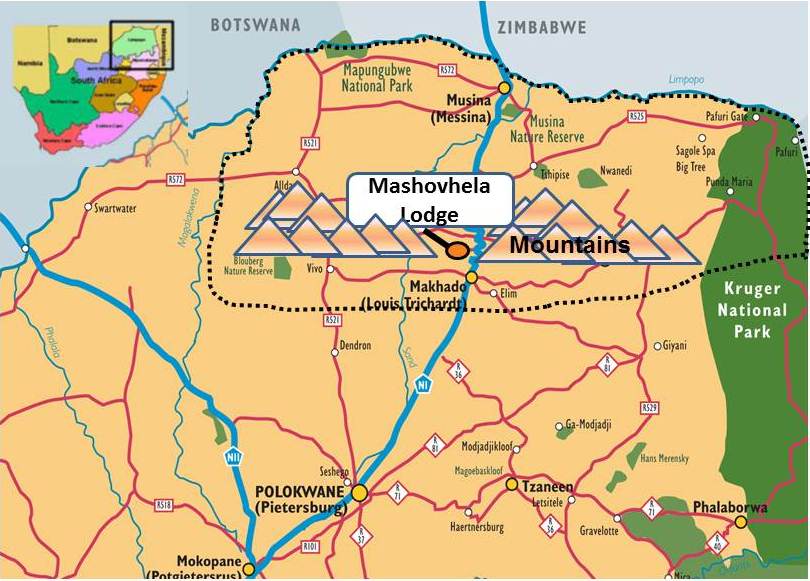|
The Vhembe Biosphere Reserve received international status when it was registered by UNESCO (United Nations Educational, Scientific and Cultural Organization) as a biosphere reserve in 2009 and it is South Africa’s sixth biosphere reserve
The Vhembe Biosphere Reserve

The Vhembe Biosphere Reserve is situated in north-eastern Limpopo covering an area of about 30 701 km2 and it is recognized internationally for its wildlife and its unique biological and cultural diversity.
The unique natural features of the area, including the Soutpansberg and the Limpopo River basin, as well as the rich culture and heritage of the people of the area has become an important eco- and cultural tourist attraction.
The reserve also includes the northern part of the Kruger National Park, the Makuleke Wetlands Ramsar Site, the Blouberg Mountains, the Mapungubwe World Heritage Site and the Makgabeng Plateau.
The northern and eastern boundaries are formed by the international boundaries with Botswana, Zimbabwe and Mozambique.
Primary Aims of the Vhembe Biosphere Reserve
- To achieve a balance between the conservation of the environment and man’s use thereof in order to achieve long-term sustainable development
- To include all role players in the process
- To foster economic and human development which is social-culturally and ecologically sustainable;
- To support the demonstration projects, environmental education and training. Research and monitoring related to local, regional, national and global issues of conservation and sustainable development.
Advantages of a Biosphere Reserve
- It integrates the current wildlife and tourism industry with the cultural assets of its people, to jointly promote the sustainable utilization of the area for the benefit of all its stakeholders.
- It empowers local communities to take responsibility for the development and conservation functions of the areas in which they live and to contribute towards their economic upliftment.
- It provides a framework within which current legislation through, for example, Integrated Development Plans (IDPs) can be used to improve planning, development and conservation in a region.
- It helps to create partnerships between private sector, community structures and Government in order to share knowledge and co-operate in solving natural resource problems.
Challenges of the Vhembe Biosphere Reserve
- Many parts of the natural environment within the Vhembe District are under pressure from a wide range of challenges, including the following:
- The area has a relatively large rural population with widespread unemployment, relatively few skills and a general lack of economic opportunities.
- A large proportion of this population consists of young people with very limited prospects of securing employment.
- Certain areas within this region, such as Mapungubwe and the Soutpansberg, have been identified as important and sensitive natural and cultural environments that need to be conserved.
- There are a number of mining projects proposed in the area and the challenge is to ensure that development is not at the expense of the long-term sustainable conservation of the natural and cultural assets of the area.
- There are also a relatively large number of unresolved land restitution cases with the challenge being of ensuring that the successful claimants are given the necessary skills to viably develop their newly-acquired properties.
The Vhembe Biosphere Reserve can overcome these problems when all the stakeholders work for the common goals
|
